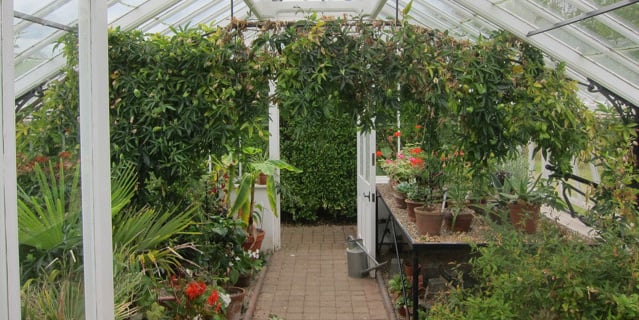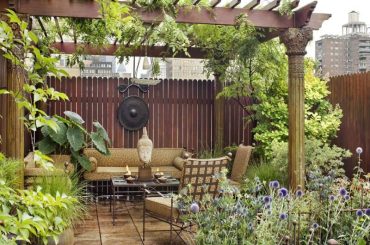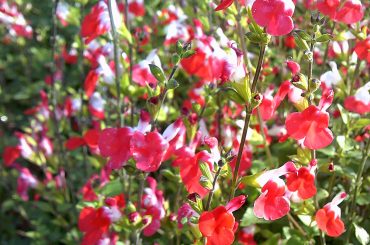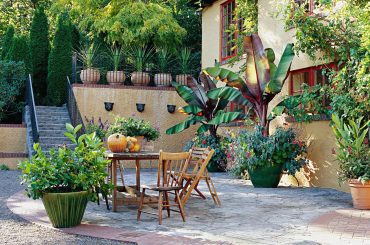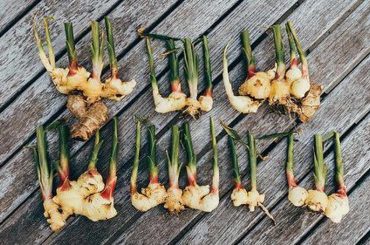Table of Contents
Vegetables can grow everywhere, given that the place has soil. But you will not be getting the best out of them by checking the requirement of soil. Some many factors and elements are interrelated and affect the growth of a plant in a positive manner.
The absence of all these factors also affects the growth of plants but in a very adverse manner. These factors are moisture, temperature, light, and pure air, to name a few. These factors are a must when growing a good yield. But the chances are that you will not have all these factors available at your place due to geographical factors.
But there is nothing to worry about as all these factors can be provided to your plants artificially. This would enable you to grow plants that you could not have grown otherwise. Out of all the existing techniques to give your plants the best growth environment, building a greenhouse is the most famous.
What Is A Greenhouse?

A greenhouse is a structure in the shape of a small house (can be more significant as per the requirement), built from glass walls and glass roofs or roof lights that are opaque.
The unique property of these structures is that they retain the heat that enters the sunlight. In the absence of a greenhouse, this heat is lost. These structures are the reason behind the famous greenhouse effect.
Because the heat is retained inside the greenhouse, the greenhouse temperature is warmer than the temperature outside. The temperature difference depends on the time of day, the season, the ventilation, and the additional heaters inside the greenhouse.
These structures having opaque glasses prevent the sunlight from falling directly on the plants (which may be dangerous for the plants).
Given that greenhouses are so good at retaining heat and light, they are an excellent method of growing plants that require a slightly warmer temperature compared to the external environment or need more care, which could not be provided if it grows along with other hardy plants. So today, we will be answering your question of “how to grow vegetables in a greenhouse.”
How to Grow Vegetables in A Greenhouse?
There are certain things you need to keep in mind while growing vegetables in a greenhouse. You should be aware of all these things and best practices before investing in building a greenhouse so that you are not stuck in the middle and the right season is gone in that time.
Using Pots and Shelves Instead of Cultivating on The Ground
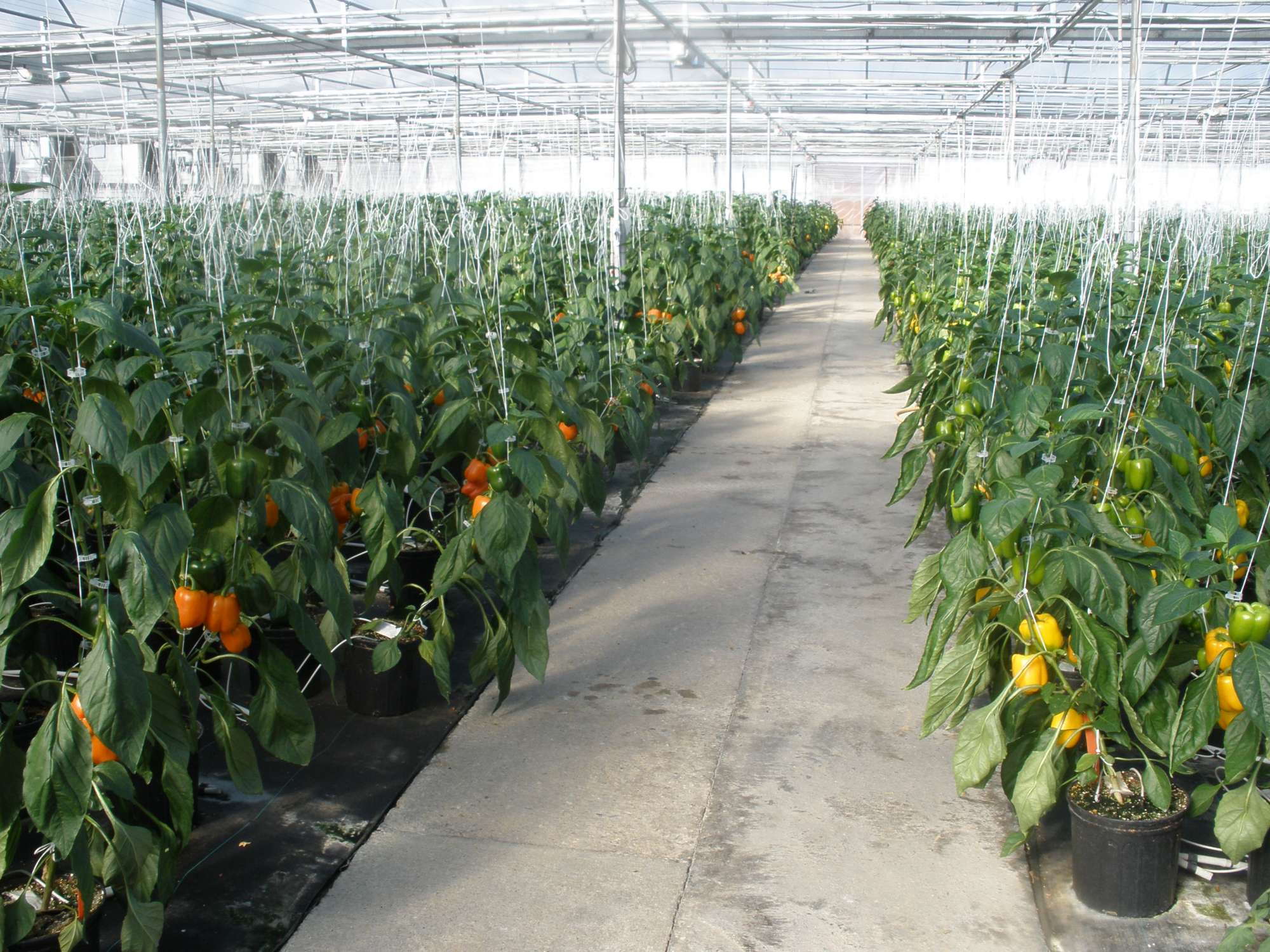
When you construct a house, you do not just use the ground for keeping stuff; instead, you use shelves and cupboards to utilize the ground space more efficiently. The same should be done when growing plants and vegetables inside a greenhouse.
You can use shelves to grow more than one plant in the ground space of just a single plant. The proximity between the plants will also help in maintaining the warmth inside.
When you use shelves and pots, you do not have to worry about your land’s soil type as you can use good quality fertilized soil from stores and put it into the pots.
The other benefit of using pots and shelves for growing vegetables is that you will have more space to navigate the greenhouse easily, and you will be able to take extensive care of all the plants. This will also help in making harvesting easy.
Do Not Over Irrigate
Refrain from over-irrigating your veggies growing inside the greenhouse. Over irrigation is not that big of a problem when your plants are growing in an open environment.
The water that is not absorbed by the soil or remains in the plants’ bodies externally is evaporated in the atmosphere. But if the plants are growing inside a greenhouse, the evaporated water is not allowed into the atmosphere and adds to the place’s humidity.
An over humid climate created inside the greenhouse could lead to fungi attacks, which will ruin all your plants. So, it is better to water your plants in the right amount and at the right intervals.
Install A Proper Ventilation System
Imagine being inside a house with no windows, no ventilators whatsoever, just one door. This would be the house of your nightmares, and no one in their right minds would consider living in these types of houses.
If you do not like a claustrophobic environment, how can you expect your plants to like it? Plants being living beings, also respire and need fresh air. You need to install a proper ventilation system so that fresh air is allowed at regular intervals.
The essential components of a ventilation system will consist of windows and ventilators. You can also install fans that bring in fresh air inside the greenhouse. A greenhouse without a proper ventilation system would do more harm than good to your plants.
Keep Stout Plants at The Bottom and Small Plants at The Top
When you plant your plants in pots, keep them on shelves. Then there is one more thing that you need to keep in mind so that the plant grows appropriately.
The stout plants that are supposed to grow taller and are going to take up more area should be placed on the bottom shelf, and the plants that are not going to grow too big are to be placed at the top of the shelves.
This is done to ensure that all the plants stay as close to the ground as possible. Staying close to the ground will make them easily accessible and accessible for something wrong that might happen.
Growing Flowers
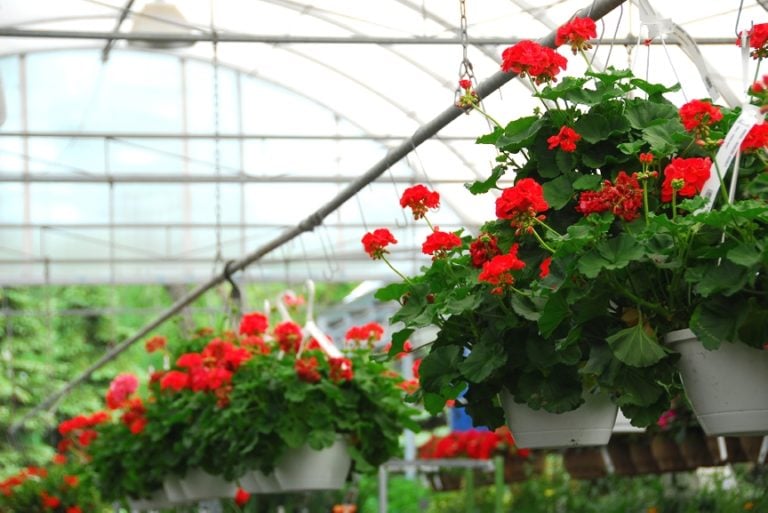
The next best practice to learn how to plant vegetables in a greenhouse in the best possible manner is to plant flowers and vegetables. I know we are not talking about gardening here, so why do we need flowers in a greenhouse that is supposed to have only vegetative plants.
For a straightforward reason, the flowers attract the pollinators, i.e., the desirable insects, and this makes sure that you have a healthy supply of vegetables and fruits from your greenhouse. Not to mention that flowers look lovely when growing up with green plants.
Make Your Greenhouse Pest-Free
As much as you need some insects to carry on the pollination for better yield, there are gazillions of insects and bugs you will not want inside your greenhouse. Having them inside your greenhouse means allowing them to have a good feast of the greeneries you have grown, and the truth is told, they will devour it like anything.
Make sure to use proper insecticides and pesticides to prevent these pests from attacking your yield. You have an option of choosing from both natural as well as artificial insecticides. A combination of both would work best.
Now that you know all the best practices to have a lush green yield inside your greenhouse, we are not done yet. You must be aware of the greenhouse’s seasonal use and operation to grow plants in the best possible manner and select the plants that are best suited for the greenhouse.
As we all know, there are five seasons in a year each is suitable for some specific kind of plants and animals. Still, we would be only paying attention to the two primary seasons of the years, i.e., summer season and winter season, as greenhouse deals with the climate’s temperature aspect. Only these two seasons are very dissimilar in terms of temperature.
So, let us learn how to grow vegetables in a greenhouse in summers and winters.
Growing Vegetables in A Greenhouse in Summers
Summers witness plants that increase as the heat and the moisture acts as a catalyst. But if you live in a place that does not receive much of the sun, then a greenhouse can only rescue your plans of growing vegetables even in the summers.
Greenhouses perform the function of insulation. The heat and the light absorbed are not lost (you already know how). In the absence of a greenhouse, your plants will only get warmth until the sun is out. Greenhouses perform the function of insulation. The heat and the light absorbed are not lost (you already know how). In the absence of a greenhouse, your plants will only get warmth until the sun is out. Fortunately, applications such as LED grow lights can mimic natural sunlight and provide your vegetables with sufficient lighting.
When it is night, and the temperature drops down, the supply of heat is also diminished while its demand remains the same. These are very effective for growing squashes and watermelons, and whatnot.
Growing Vegetables in A Greenhouse in Winters
Winters are a tough time to grow for most plants, but many of them thrive the most in the winters. Although winter plants’ growth is not as rapid as the plants growing in the summer season, these plants are hardy.
You will require a greenhouse if the place that you live in gets cold in winter. The cold weather is not suitable for plants.
By growing these plants inside a greenhouse, you ensure that they get the necessary warmth and sunlight. You can also use heaters (electric or gas) to keep the temperature higher than outside.
Greenhouse Maintenance
Just like your house needs maintenance to make it more accommodating and safer, your greenhouse needs one, too.
- It would help if you took out all the plants inside the greenhouse every season or midseason to clean it properly.
- You should check the frames of the greenhouse.
- Inspect the ventilation system.
- Clean the ground.
- Disinfect the benches and shelves.
- Check the glass walls for cracks.
Conclusion
The greenhouse is a beneficial technique to grow good quality fruits and vegetables both for selling or for self-consumption.
If your plant needs a warmer climate than the climate around, you build a greenhouse is the best thing to go with.
The temperature inside a greenhouse is 10 degrees higher than the temperature outside is. The greenhouse also helps ingrown plants faster than they grow in an open environment.
So, I guess you know you are aware of using a greenhouse in the best particular manner and the season you should use it.
This will complete that answer to your question of how to grow vegetables in a greenhouse.

